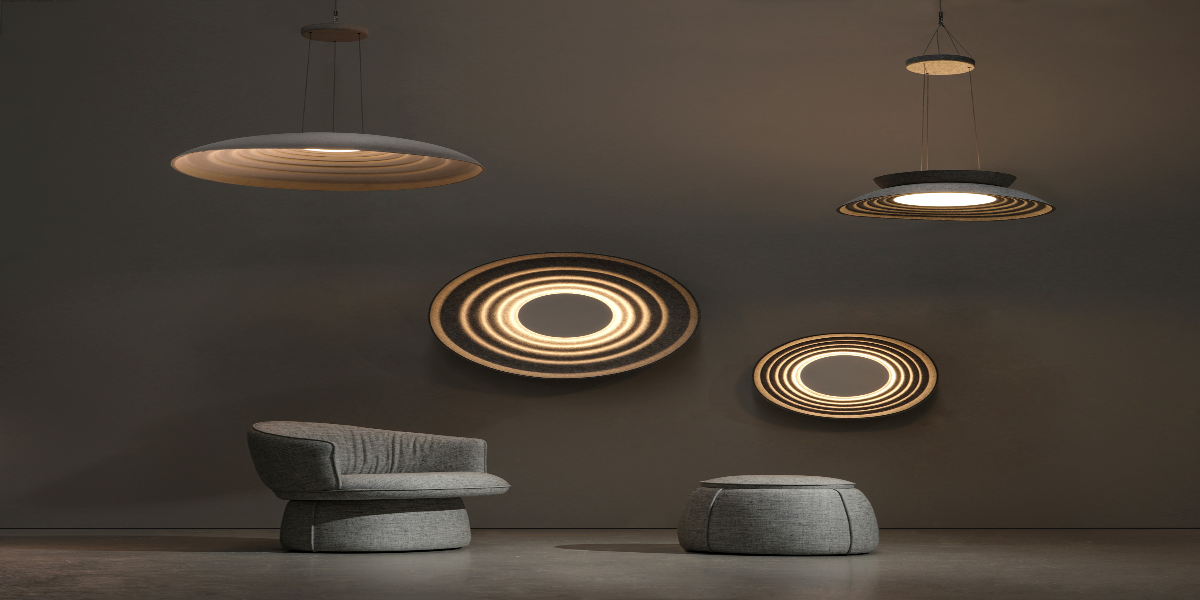
The New Path to Acoustic Comfort: Differences Between Wall and Ceiling Panels
Modern architectural designs often feature elements like hard floors, large glass surfaces, and high ceilings, which unfortunately introduce significant problems with reverberation and noise. The aesthetic solution to these issues lies in acoustic panel systems.
At Acarkon, our acoustic panel solutions require us to examine the critical differences between our main product keywords—wall and ceiling panels—based on their intended use. It is crucial to remember that the primary goal of both panel types is not absolute soundproofing but rather controlling the interior acoustics of a space by reducing echo and minimizing reverberation time.
Acoustic Panel Difference: Wall or Ceiling?
While wall and ceiling panels are structurally similar, usually made from sound-absorbing materials like a felt base and wood/MDF laminates, they interact with sound waves differently due to their positioning, which leads them to serve distinct functions.
A. Acoustic Wall Panels and Their Advantages
Acoustic wall panels are generally used near floor level and in areas of human interaction.
- Aesthetics and Accessibility: Wall panels are the most visible elements, significantly impacting the room's overall decor. The panels offered by Acarkon create an aesthetic texture with various colors and slat thicknesses. They are also easily accessible for decorative purposes and cleaning.
- Controlling Primary Sound Reflections: They are highly effective at controlling reflections, especially from speech and direct sound sources. Sound immediately strikes the nearest surface after leaving the source. In an office or meeting room, wall panels minimize the sound reflection coming back from the opposite wall after a speaker speaks.
- Indirect Contribution to Soundproofing: By absorbing sound and reducing the overall noise level in the environment, wall panels indirectly decrease the amount of sound leakage to the outside. However, true soundproofing (blocking sound from neighbors) requires additional, dense sound barrier materials.
B. Acoustic Ceiling Panels and Their Advantages
The ceiling is typically the largest, most unobstructed hard surface in a space. When sound waves travel vertically, the ceiling becomes the primary source of echo.
- Broad Surface Control: The ceiling is usually the largest area free from obstacles like furniture, doors, or windows. Consequently, a ceiling panel can provide a high degree of sound absorption, fundamentally improving the general acoustic comfort of the space. It is the most effective way to control reverberation in large, open-plan offices or high-ceiling restaurants.
- Independent Design Options: Acarkon's product range includes various ceiling systems like Baffles or Floating Ceiling Panels, which provide acoustic improvement without taking up floor space. These panels add visual depth and a modern atmosphere to the venue.
- Homogeneous Sound Distribution: Ceiling panels ensure sound absorption is more uniformly distributed throughout the space, making the listening experience more consistent and clear in every corner of the venue.
Usage Strategy in Different Spaces
To achieve the highest level of acoustic comfort, the ideal approach is to use a combination of both wall and ceiling panels.
- Offices and Meeting Rooms: Wall panels enhance speech clarity, while the ceiling panel absorbs general background noise (phone calls, typing sounds, etc.), increasing focus.
- Home Cinema Rooms: Wall panels control the first reflection points to regulate sound dispersion, and ceiling panels prevent the reverberation caused by the intense sound waves produced by cinematic sound systems.
- Commercial and Educational Areas: In places with high noise levels like restaurants, cafes, or classrooms, basic noise control should be achieved with a large surface area provided by a ceiling panel. Wall panels should then be used as decorative and complementary elements.
At Acarkon, we analyze the specific acoustic needs of every project to design the ideal combination of wall and ceiling panels, thereby ensuring both aesthetic and functional excellence in your spaces.
Frequently Asked Questions (FAQ)
What is the Acoustic Panel Difference and why is it important?
The Acoustic Panel Difference lies in how wall panels control direct sound reflections like speech, while the ceiling panel reduces general reverberation over a wider area. This distinction is vital for strategically optimizing the acoustic environment.
Is a Ceiling Panel or a Wall Panel more effective?
Both are effective but serve different purposes. The Ceiling Panel is typically the most efficient solution for reducing overall noise and echo, as it covers the largest, unobstructed surface. Wall panels are crucial for aesthetics and improving speech clarity.
Does using an acoustic panel provide Soundproofing?
No, acoustic panels do not provide direct Soundproofing. They improve acoustic comfort by absorbing sound within a room, reducing echo. Blocking sound transmission between rooms requires additional dense barrier materials.
What are the architectural advantages of using a Ceiling Panel?
Using a Ceiling Panel allows for acoustic improvement across a large surface without limiting floor space or changing furniture layout. Ceiling solutions add visual depth and offer powerful sound absorption without compromising the room's aesthetics.



